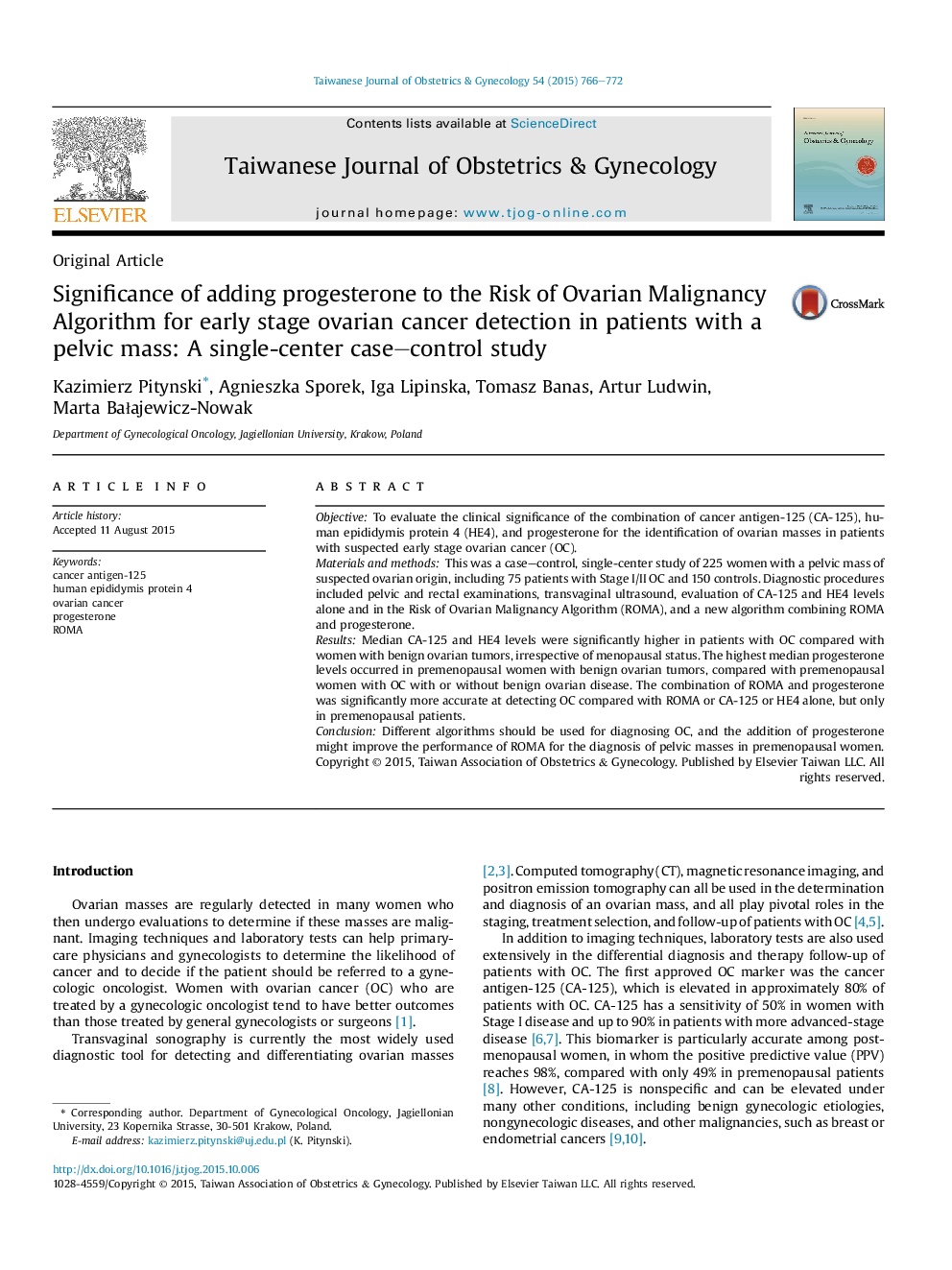| Article ID | Journal | Published Year | Pages | File Type |
|---|---|---|---|---|
| 3975252 | Taiwanese Journal of Obstetrics and Gynecology | 2015 | 7 Pages |
ObjectiveTo evaluate the clinical significance of the combination of cancer antigen-125 (CA-125), human epididymis protein 4 (HE4), and progesterone for the identification of ovarian masses in patients with suspected early stage ovarian cancer (OC).Materials and methodsThis was a case–control, single-center study of 225 women with a pelvic mass of suspected ovarian origin, including 75 patients with Stage I/II OC and 150 controls. Diagnostic procedures included pelvic and rectal examinations, transvaginal ultrasound, evaluation of CA-125 and HE4 levels alone and in the Risk of Ovarian Malignancy Algorithm (ROMA), and a new algorithm combining ROMA and progesterone.ResultsMedian CA-125 and HE4 levels were significantly higher in patients with OC compared with women with benign ovarian tumors, irrespective of menopausal status. The highest median progesterone levels occurred in premenopausal women with benign ovarian tumors, compared with premenopausal women with OC with or without benign ovarian disease. The combination of ROMA and progesterone was significantly more accurate at detecting OC compared with ROMA or CA-125 or HE4 alone, but only in premenopausal patients.ConclusionDifferent algorithms should be used for diagnosing OC, and the addition of progesterone might improve the performance of ROMA for the diagnosis of pelvic masses in premenopausal women.
